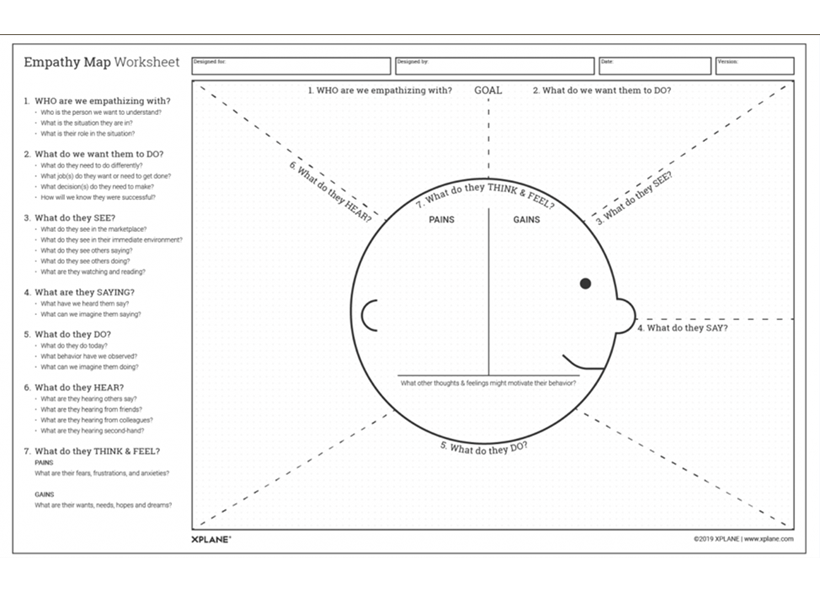The principle of effective communication is to send the right message to your target audience. In order to reach this goal successfully it is really important to know very well for whom you are sending your message – what kind of person it is, where is he / she searching for information, what kind of media is most convenient for him /her, what kind of information is clear for him or her, what this person is interested in at this moment, what kind of opinions and believes he / she has and etc.
The best way for you to get to know your target message receiver is to step in his / her own shoes. It is important to use your own empathy and try to see the world through your target audience eyes. Here is a very valuable tool – Empathy map worksheet for this purpose.
Empathy maps are usually used for marketing purposes. They are intended to create a better understanding of customer needs and use this information to improve customer service or customer experience. The principle is to start with their needs in mind.

Figure 2 Empathy map: https://xplane.com/worksheets/empathy-map-worksheet/
According to the given time for participants to spend in the empathy phase two different empathy maps can be given. You could choose more detailed version of Empathy map (as it is shown in example above) or bring shorter Empathy map in order just to get the feeling of your receiver’s needs.
(Here is online link for shorter Empathy map examples and online worksheet https://online.visual-paradigm.com/fr/diagrams/templates/empathy-map/empathy-map/ )
This workshop is a good opportunity for participants to share their opinions. For this task split the group into teams of 3-4 participants and give them at least 20-30 minutes to discuss and fill in all parts of the worksheet. You can choose the way to fill it: participants can use sticky notes, write down on the sheet or use the online version. However, the sticky note option is recommended.
In this exercise it is very important for the participants to imagine an average person of their target group, who would represent receiver character traits. Ask them to create an imaginary person: name, profession, family description as real as possible. While they are filling the worksheet, ask them to remember the target group and answer the questions from its perspective. As well ask them to leave their own opinions behind while participating in this task.
After the worksheets are filled, ask participants to present their job for the rest of the group.
After all groups have presented their personas, ask the audience to discuss in a big group what was common and what was different between personas. Sharing understanding is very important for groups who seek effective communication during this learning process.
Further reading:
Valuable article for facilitator about Empathy map purpose: https://medium.com/swlh/what-is-an-empathy-map-and-why-is-it-valuable-for-your-business-14236be4fdf4



